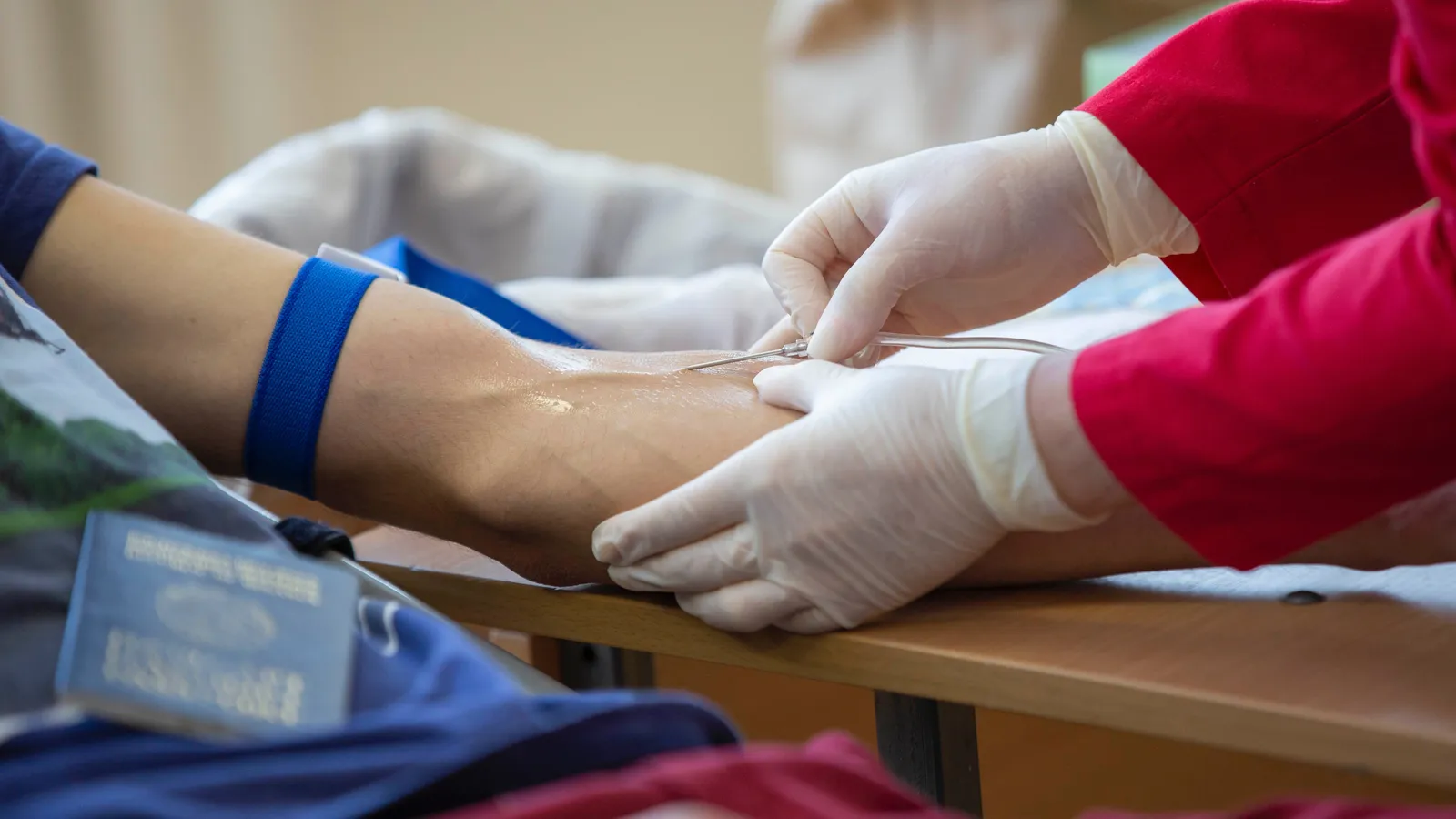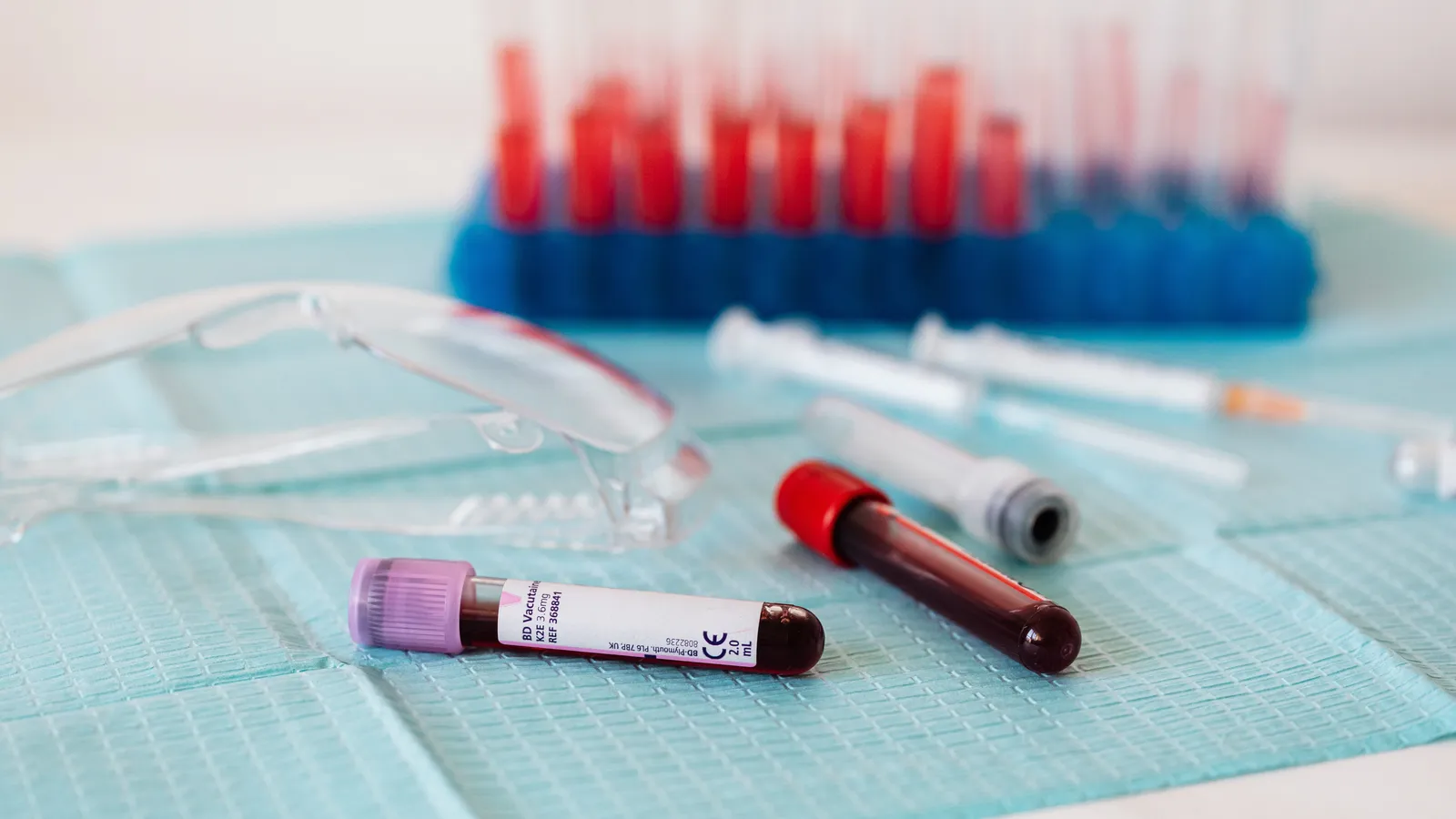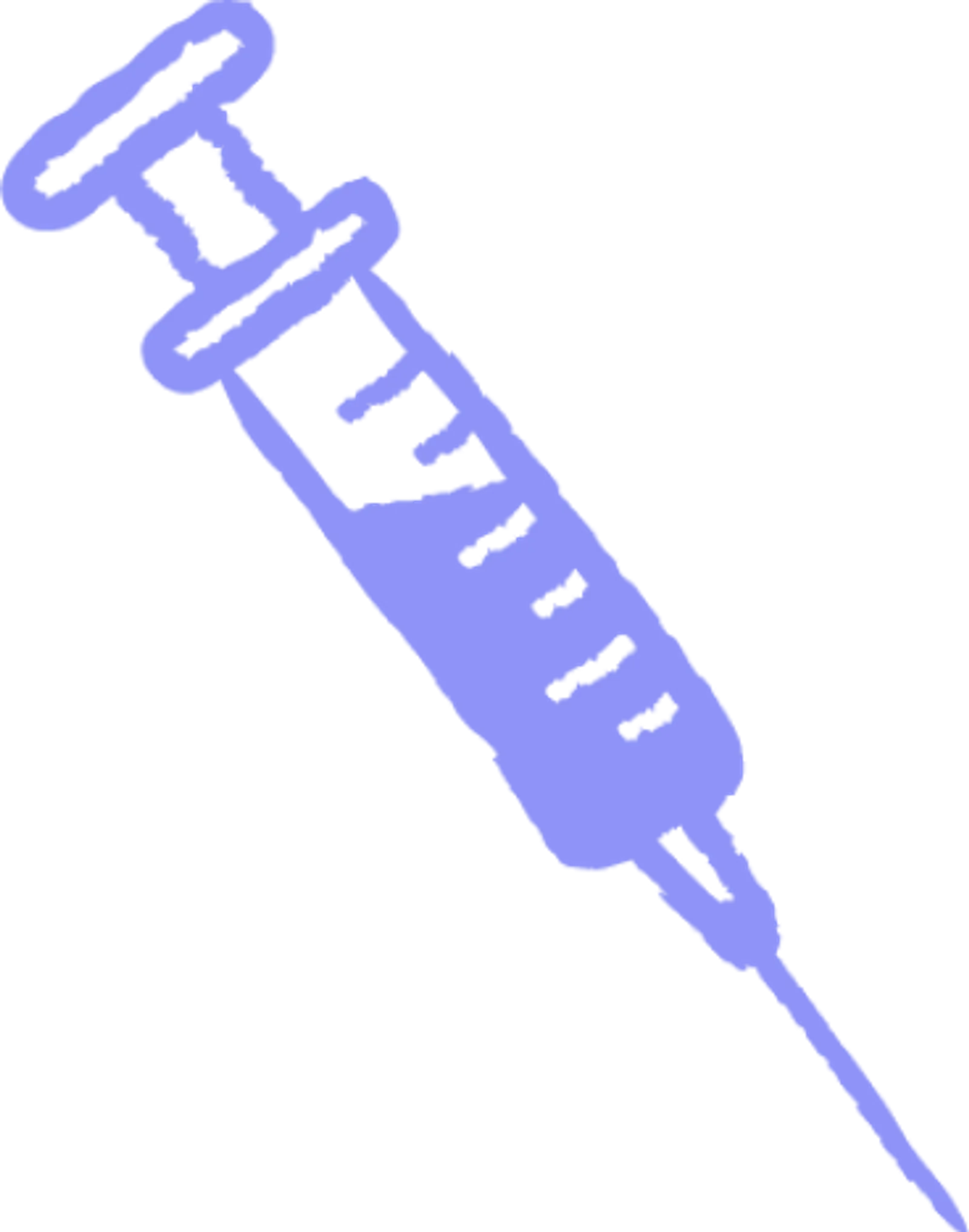Plasma 101
Who: Eligible donors between 18 and 63 can earn up to $560 a month in NY and up to $770 a month in FL.
What: Plasma is the yellow part of your blood that replenishes naturally.
Where: Queens, Brooklyn, The Bronx (NY), and Ft. Pierce (FL).
Why: Get paid to donate and help treat bleeding disorders, immune deficiencies, and more.
When: No appointment needed—walk in anytime before closing.
Plasma Donation: Your Guide to Saving Lives

Plasma Donation: Your Guide to Saving Lives
Here's everything you need to know before becoming a registered plasma donor and getting paid to save lives.
Wondering if you can donate plasma to help save lives? As plasma shortages persist, financial incentives now reward repeat donors. However, eligibility restrictions, complicated processes, and myths around safety may deter interested contributors. This definitive guide cuts through the confusion to clarify everything first-timers need to know – from how donations work to finding where to sign up nearby.
How many times can you donate plasma? Plasma donors can earn $400+ per month while helping save lives. You must be 18-69 years old and pass health screening to donate plasma up to 104 times per year with 48 hours between donations. Beyond the significant impact on individual earnings, consistent plasma donors also play a pivotal role in sustaining the economic aspect of healthcare, contributing to the supply chain of plasma therapies for conditions like hemophilia and immune deficiencies, thereby alleviating plasma shortages and fostering economic stability in the healthcare sector. The economic impact of plasma donation encompasses both individual financial benefits for donors and broader contributions to the healthcare industry.
Eligibility and Process of Plasma Donation:
Criteria | Details |
Age Requirements | 18-69 years old (16-17 with parental consent, 70+ with doctor's note) |
Health Restrictions | No HIV, hepatitis, uncontrolled high blood pressure; deferments for recent illnesses, tattoos, piercings, pregnancy, travel to malaria-risk areas |
Medications Causing Deferral | Blood thinners, certain antibiotics, anti-inflammatory drugs, hormones |
Registration and Screening | Personal and medical history review, physical examination, blood tests |
Physical Examination | Check of vitals, vein evaluation for donation |
Automated Donation Process | Blood drawn, plasma separated, red cells returned with saline |
Frequency of Donations | Up to twice per week, 48 hours between donations, max 104 times per year |
Who Can Donate Plasma?
Age Requirements
Let’s look at when you can and can’t donate plasma. To donate plasma, you must be between the ages of 18 and 69. People aged 16 or 17 may be eligible to donate with parental consent, while those over 70 require a doctor's note to approve them for donation. The age limits ensure donors are healthy enough for the plasma removal process.
Health Restrictions
Certain health conditions may temporarily or permanently disqualify you from donating plasma. For example, you cannot donate if you have HIV, hepatitis, or uncontrolled high blood pressure. Other deferments relate to recent illnesses, tattoos, piercings, pregnancy, and travel to areas with malaria risk.
The reason for health-related donor exclusions is to protect the safety of both donors and plasma product recipients. Plasma donors undergo screening to check if they meet the necessary health requirements. Be transparent about your medical history to determine if plasma donation is right for you.
Medications Causing Deferral
Specific medications may impact your eligibility to donate plasma. Medications that thin the blood, like aspirin and anticoagulants, require deferral for a set time before donation. The same applies to certain antibiotics, Anti-inflammatory drugs, and hormones.
Inform staff about all prescription, over-the-counter, herbal, and dietary supplements you take. They will advise you on any plasma donation restrictions. Some regular donors may need to temporarily stop medications to donate.
The eligibility criteria for plasma donation focuses on donor health and safety. If you do not meet the age, health status or medication requirements, it does not mean you can never donate. Deferments are often temporary. Check back with the donation center staff regularly on your eligibility status if you are deferred.

Benefits and Preparation for Plasma Donation:
Aspect | Details |
Financial Compensation | Up to $400+ per month, immediate payment post-donation |
Saving Lives | Plasma used for therapies in hemophilia, immune deficiencies, etc. |
Plasma Shortages | Regular donations help maintain sufficient plasma supply |
Hydration | Drink 16-20 oz. of water before donation, monitor urine color |
Dietary Suggestions | Protein-rich meal before donation, avoid fatty foods |
Helpful Checklist | Photo ID, medical paperwork, donor payment card, comfortable clothing |
Finding Centers | Use locator tools, mobile apps, and local listings |
Common Mild Reactions | Lightheadedness, nausea, chills, tingling, fatigue |
Rare Complications | Nerve injury, hematoma, phlebitis, allergic reactions, infection |
The Benefits of Plasma Donation
Financial Compensation
Donating plasma provides financial compensation for your time and effort. Payment rates vary but first-time donors can expect to earn $50 per donation, while regular donors earn up to $400 or more per month.
You get paid immediately after every donation in cash, check or by loading funds onto a prepaid card. There are many plasma donation centers that also offer referral bonuses, loyalty rewards programs and periodic donation fee increases to benefit committed donors.
Saving Lives
The journey of plasma from donor to recipient is fascinating. The plasma collected from your blood donation goes on to improve and save lives. Plasma is used to create therapies that treat patients suffering from chronic conditions and facing life-threatening illnesses.
Plasma products help hemophilia patients stop bleeding and immunoglobulin therapies bolster weakened immune systems in newborns and transplant recipients. Plasma transfusions provide essential proteins to burn victims and shock patients when their body cannot make its own. The power of plasma in immunity extends further, contributing vital immune components that play a crucial role in defending the body against infections and help in treating diseases, highlighting its integral role in bolstering overall immunity.
By selflessly donating your plasma on a regular basis, you directly enable healing and save lives through modern medicine.
Plasma Shortages
There is a constant shortage of donated plasma to meet global medical demands. Plasma supply levels fluctuate and cannot keep pace with the ever-increasing needs of diverse patient groups.
Regular plasma donors help ease seasonal and ongoing plasma shortages. Donating twice weekly allows plasma collection centers to maintain sufficient reserves to avoid rationing critical plasma-based therapies.
Becoming a regular plasma donor ensures patients continuously have access to the plasma therapies they rely on. Your consistent donations establish a plasma supply buffer for unexpected surges in medical demand.
What Happens During Plasma Donation?
Registration and Screening
Your first plasma donation visit focuses on registration and eligibility screening. After checking in, you'll provide personal and medical history details that clinic staff review to determine if you meet the criteria.
You will also have a physical examination covering vital signs, blood pressure, pulse rate, temperature, and hematocrit level. A blood sample may get analyzed for protein levels or infectious diseases that could disqualify you.
Passing the screening requirements means you get medically cleared for automated plasma collection. Those who don't fulfill the plasma donation prerequisites will have to re-test at a later date after resolving any temporary disqualifying health issues.
Physical Examination
In addition to the registration screening, a physician will examine you before connecting to the automated plasma collection system. They evaluate your veins to find the most suitable arm for plasma donation.
The physical checkup also establishes a baseline for your vitals. Your blood pressure, temperature, pulse and general wellness get noted for comparison during and after the plasma removal process. Abnormal readings mean stopping the donation and addressing any underlying health issues.
Automated Donation
How does plasma donation work? Once cleared for donation, a staff member will cleanse and numb the venipuncture site on your arm before inserting a sterile needle. The needle connects to an automated machine that will remove your blood, separate plasma, and return your red blood cells mixed with a saline solution back into your body.
The system operating automatically helps minimize manual handling for a smoother plasma extraction process. The machine controls the plasma removal, monitors vitals, and calculates when you donate the maximum amount without impacting health. Automation ensures plasma donations remain a safe, quickly completed process.

Frequency of Plasma Donations
Intervals Between Donations
You must allow enough time between plasma donations for your body to regenerate proteins and fluids. The standard deferral period is 48 hours between donations.
However, regular donors can provide plasma up to twice per seven-day week while maintaining healthy protein levels. Allowing 48 hours of rest and recovery between sessions maximizes donation frequency while avoiding risks from over-donation.
Plasma donation centers like Olgam Life track your prior donations and alert you on eligibility for your next appointment based on the safe 48-hour interval rule. Adhering to these regulated periods ensures donors remain healthy during ongoing donation commitments.
Maximum Yearly Donations
Most plasma donation centers allow up to 104 donations per year for committed donors on twice weekly schedules. This limit stems from restrictions allowing just 24 donations over a rolling 90-day period.
Going above either the quarterly or yearly plasma donation ceilings poses health risks from insufficient protein regeneration between collections. Olgam Life staff track your plasma donation frequency and will defer donors attempting to exceed these maximums.
The limits on plasma donation intervals and yearly totals focus entirely on keeping donors healthy. By self-imposing deferrals when your body needs rest, you can safely donate plasma for years without issue.
As a new donor, expect to need more recovery time between early plasma donations. Your body will adjust to replenishing proteins over successive donation cycles. Until then, avoid over-donating by strictly following all deferral period guidance.
How to Prepare for Plasma Donation
Hydration
Let’s talk about hydration and plasma. Being well-hydrated before your plasma donation appointment helps the process go smoothly. Drink 16-20 oz. of water in the 2-4 hours leading up to your reserved slot. Staying hydrated keeps your plasma levels optimal and blood flow easy for efficient automated collection.
Monitor your urine color to avoid overhydrating and dangerously diluting protein levels. A light yellow, almost clear shade signals you are well hydrated. If your urine runs completely clear, drink less water so proteins concentrate sufficiently for donation eligibility screening.
Dietary Suggestions
Lifestyle can have an impact on on plasma and its components. Eat a protein-rich meal shortly before heading in for your plasma donation. Good protein sources include eggs, yogurt, cheese, lean meat, nuts, beans or lentils. Avoid fatty or greasy foods that can cause nausea when giving plasma.
The small protein boost helps your body stabilize and regenerate plasma levels faster after donation. Being in a fed state also prevents possible lightheadedness that can occur when donating on an empty stomach.
Helpful Checklist
Come prepared to your plasma donation appointment by having:
Photo ID card
Any medical paperwork if you are a new donor
Your donor payment card
A sweater or jacket in case you get cold during donation
A snack for after donation like juice, crackers or peanut butter sandwich
You also want to wear accessible clothing with sleeves that easily roll up above your elbow. This allows quick, clear vein access for the needle insertion process.
Following Olgam Life's plasma donation preparation tips sets you up for an easy, efficient and healthy donor experience. Being ready for each appointment helps staff deliver their signature quality service.

Finding Plasma Donation Centers
Center Locator Tools
Many plasma collection networks offer online locator tools to help new donors find their nearest plasma donation branch. Entering your city or zip code into locator searches displays contact details, operating hours and driving directions for neighborhood locations.
Olgam Life provides a Find a Center locator that maps all active branches while showing new center openings coming soon. The locator data also provides each site's compensation rates, referral bonuses and loyalty reward programs.
Mobile Applications
If you frequently travel or move around different cities, use plasma center finder apps to pinpoint donation sites wherever you are. Applications like PlasmaPay and NeedleNerd compile all plasma collection networks in a single searchable platform.
Mobile apps allow on-the-go searching by current GPS location or city/zip code input. Saved locations, navigation and integrated rating reviews offer a handy plasma donation tool.
Local Listings
Understanding the major plasma collection chains operating in your state gives another avenue to find neighborhood donor centers. Searching BioLife, CSL Plasma, Octapharma or Grifols directly checks center lists covering wider surrounding areas.
Comparing multiple plasma company listings exposes new sites opening up from network expansion initiatives. Cross-checking addresses ensures you select branches with the highest compensation rates and best donor reviews.
Casting a wide net when seeking plasma donation locations gives you your pick of reputable centers nearby. Online search tools, mobile apps and directly contacting chains simplifies pinpointing where to start saving lives.
Potential Side Effects
Common Mild Reactions
Most plasma donors experience minor temporary reactions from the automated collection process. Common mild side effects include:
Lightheadedness, dizziness or fainting during donation
Nausea with an urge to vomit
Chills with a cold sweat
Tingling sensations around the mouth
Reduced energy levels or fatigue after donation
These symptoms normally pass within five to ten minutes of finishing the plasma removal. Staying hydrated, being in a fed state and resting post-donation all help minimize common reactions some donors exhibit.
Rare Complications
Modern automated plasma extraction technology makes serious side effects very rare occurrences today. However, rare risks include:
Nerve injury from incorrect venous access needle insertion
Blood leakage into surrounding arm tissue (hematoma)
Vein inflammation (phlebitis)
Allergic reaction to anticoagulant used in machine
Bacterial infection from unsterilized equipment
Reputable centers like Olgam Life use new sterile disposable donation sets for each donor while closely monitoring for any signs of complication. Staff also apply antibiotic creams and pressure bandages to venipuncture areas to avoid downstream infection risks.
Outside of temporary localized pain, bruising or tingling at collection sites, persistent symptoms may reflect an underlying health issue needing medical evaluation. Alert staff to any unusual reactions so they can provide proper guidance and support to affected donors.
Look at our blog for more useful information to help you prepare for donation or understand how it works. If you’re ready to be a part of something amazing, find our nearest donor center.
















